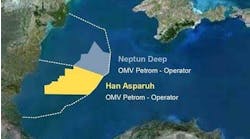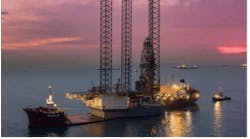Drilling contractors and operators will never completely see eye to eye on doing business together, especially where day rates are concerned. For operators, the day rate will forever be too high. For the contractor, the rate will be too low. But who is right? What is a fair rate?
Operators know how much they can pay for a rig and still make a profit, and contractors know how much they can contract a rig and still make a profit. It seems the contractors had to suffer some low rates for the last quarter because profits were extremely low, if they made a profit at all.
Drilling contractors have reported earnings for the second quarter of 1999. Compared to the second quarter of 1998, every contractor reported major declines in net income and a few reported net losses on the quarter.
How does this compare with the big three operators - BP Amoco, Shell, and Exxon Mobil. BP Amoco and Shell reported net incomes up 19% and 30%, respectively, while Exxon Mobil reported a decline of 25%. While this is not a direct comparison, it is important to note that the operators weathered the troubled last year a great deal better than rig contractors.
And conditions for contractors do not appear to be getting much better, at least for the rest of this year. Almost every contractor agreed that the slowdown would continue at least through the end of the year, as operators get their balance sheets in order and begin new drilling programs. As new programs are contracted and the idle rigs return to work, day rates will once again rise and contractors will begin to see some effects of the market turnaround - hopefully by the second quarter of 2000.
Marine 700 brings joy - and pain
Marine Drilling's newbuild Marine 700 semisubmersible has recently been the cause of both joy and pain. Friede Goldman, the company responsible for fabricating the rig, is celebrating a record-breaking delivery at a new shipyard. While at the same time, Marine Drilling is feeling some pain, as Esso has not accepted delivery of the rig.
The good news for Friede is the Marine 700 is the first new mobile offshore drilling rig built in the company's new Friede Goldman Offshore - East yard in Pascagoula, Mississippi. The project was completed in record time, just one day before the delivery deadline. In addition to being the inaugural project for the yard, the Marine 700 also boasts the honor of being the first newbuild semisubmersible drilling rig built in the United States since 1983.
However, while Friede Goldman celebrated, Marine Drilling was busy negotiating new terms with Esso. Two weeks before delivery from the yard, Esso threatened to cancel the rig's five-year, $165,410/day contract if the vessel was not ready by the delivery deadline. Marine was able to dodge this bullet when the yard delivered the rig a day ahead of schedule. But, upon delivery to Esso, the company declined acceptance claiming that the unit was not ready.
The companies negotiated an ammendment to the five-year contract which gave Marine until September 1 to deliver the rig in exchange for a reduced day rate of $130,000, subject to an annual boost in each of the last four years of the contract. This equates to a decrease in total revenue from $301.9 million to $237.5 million for Marine.
Esso has since accepted the rig and it is moving to location in the deepwater Gulf of Mexico.
Sanity check, and watch for sudden squalls
In response to the article on Deepwater Drillship Design in the July issue. Howard Shatto, the developer of the "Sanity Check" offered some clarification to the test he developed to establish how a vessel will maintain station.
"The 60 knots of beam wind holding capability should be done at 80% of full maximum lateral thrust," Shatto explained. "To omit the 80% factor would leave a design needing 25% more beam thrust than your recipe provides. This would be a serious shortfall.
"I came to this approach many years ago after seeing the infinite combinations of wind, waves, and current put to both physical and computer models. Mostly, these tested maximum survival and operating conditions with weather from near the bow," he said. "But experience shows that it is the sudden unexpected squall that can come from any direction and change direction faster than the ship can turn to get the bow into the weather, rather than big storms like hurricanes that cause drillships to have emergency disconnects.
"The sudden wind can do its damage long before it can develop a significant sea state.
"The numbers are from a design that has been blown off location, but rarely enough that it looked like a good empirical go-by. Drillships with less capability were blown off more often than seemed reasonable. The 80% value originally was used to provide some margin for control dynamics. The preferred criterion for ships is a beam wind holding velocity of 68 knots at 100% of full lateral thrust. It is too tempting otherwise to say for a badly balanced beam sail area that we will take the 20% off the end that doesn't need it.
"Although the 68 knot capability may seldom be needed, excess capacity is strongly beneficial to reliability. It helps cover the times when engines or thrusters are not up to full performance. Several designers use this criterion, and many of the new drillships meet it.
"Drillships with this much power will generally have a respectable transit speed and good holding capability against survival conditions on the bow. Total power and thrust requirements for semis are driven by survival conditions and will naturally as a result have a higher beam wind holding capability than drillships."




